Text
Average Efficiency From Domestic Air-Source Heat Pumps Outperforming 5.37 Times Than Boliers
According to the latest figures, the average efficiency achieved by domestic air-source heat pumps installed by Harnitek in customers' homes hit 440 per cent over the last year - meaning for every unit of energy going into the heat pump,4.4 units are generated as heat output.
This is 5.37 times more efficient than a typical gas boilers, which average just 82 per cent efficiency according to figures, and 4.78 times more efficient than the 92 per cent figure most efficient modern A-rated boilers are advertised as being able to achieve. That means customers could save more money from the energy part, based on the rising energy prices.

#harnitek#heat pump#ecofriendly#energy#europe#waterheater#cooling#r32#heating#solar system#boiler installation#carbon emissions
1 note
·
View note
Text
That’s gonna happen if we purchase heat pumps
That is what is gonna happen if we purchase heat pumps, ans phase out fossil fuel boilers:
1. Lead to a 40% reduction in gas demand in buildings by 2030.
2. Create 3 million net additional jobs.
3. Lead to 2.5% annual GDP growth.
4. Cut CO2 emissions from EU buildings by 46% by 2030.
5. Slash NOx from household heating by almost 40% by 2030.
6. Reduce household heating bills by 20% by 2030.
7. Free up to E3.2 billion in heating subsidies for low-income households.
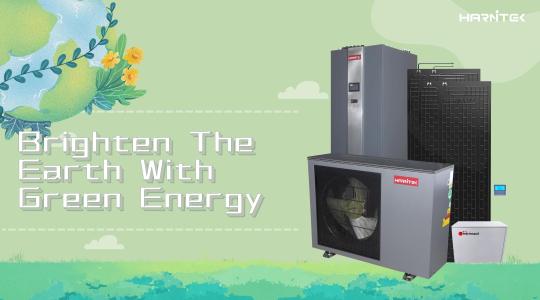
#harnitek#heat pump#ecofriendly#energy#europe#solar system#waterheater#cooling#r32#co2#co2 emissions#green environment#environment#gdp#career
1 note
·
View note
Text
Heat pumps avoid Europe’s buildings millions of emissions!
Europe’s buildings sector is avoiding more greenhouse gasses than ever before thanks to record growth in heat pump sales in 2022. The 3 million heat pumps added last year bring the total stock of heat pumps to 20 million. These avoid 52.5 Megatonnes of greenhouse gas emissions per year – around the annual total of Greece.
France, which yet again saw strong heat pump growth last year, is leading the way in terms of avoided greenhouse gas emissions through heat pumps, at well over 16 Mt. It is followed some way behind by Germany and Italy at over 5 Mt avoided each.

2023 will be an outstanding year for European heat pump sales. The foundation is laid for continued exceptional growth and with it the benefits heat pumps bring in terms of climateaction, energy independence and jobs. This is without a doubt the decade of heat pumps.
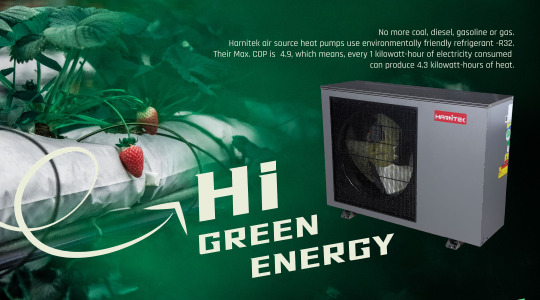
#harnitek#heat pump#ecofriendly#energy#europe#cooling#heating#r32#greenhouse#green energy#green environment#environment#climate change#recycling#airconditioning
1 note
·
View note
Text
Thats why we prefer Air Source Heat Pumps not Air Conditioners
Both air source heat pumps and air conditioners have the ability to cool and heat, but why are more and more people more inclined to choose air source heat pumps now? What is the difference between them?
1. Working temperature & electricity cost:
Anyone who has turned on the air conditioner for heating knows that it’s heating effect is not really good, and also consumes a lot of electricity.
After reading the parameters of the air conditioner, you will know that it is related to the working temperature of the air conditioner. Under normal circumstances, the working temperature of the air conditioner is between -7°C and 43°C, which means that the air conditioner cannot work when it is lower than -7°C. However, in fact, when the temperature is 0°C, it is already difficult for the air conditioner to heat, so most air conditioners will use electric auxiliary heating at this time. Generally, there is an electric auxiliary function key on the remote control of the air conditioner. Therefore, the air conditioner consumes a lot of electricity when heating in winter, and the electricity bill consumed is naturally relatively high.
Taking Harnitek's air source heat pumps as an example, their working temperature is -25°C~43°C, and they adopt the technology of Enhanced Vapor Injection, which can stand the low temperature outside in severe cold winters. In addition, Harnitek air source heat pump uses the heat in the air instead of simply relying on "electricity-to-heat" conversion, so the SCOP is as high as 4.3. Therefore, air source heat pumps' heating effect is better than air conditioners, and can save more energy.
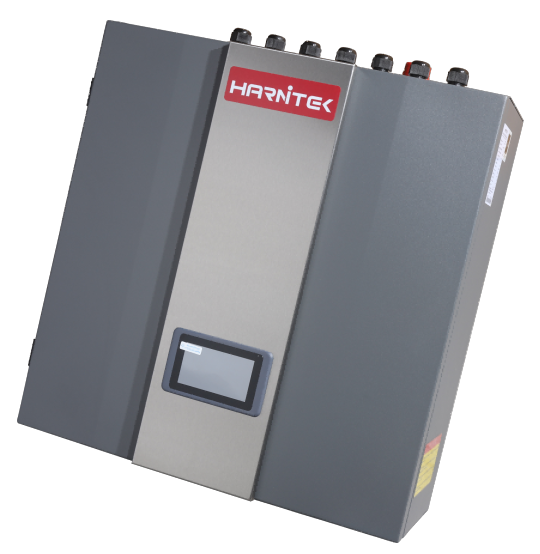
2. Usage experience
2.1 Heat exchange medium: If the air conditioner is turned on for a long time, many people will feel the mouth is dry and throat is getting hoarse, which is more obvious in winter. This is because the air conditioner is a fluorine system cycle, and the fluorine system will absorb a large amount of water from the air regardless of cooling or heating, and the result is we will lose body water in a dry environment. The air source heat pump is a water system circulation, through heating water, and then using the air supply to transfer the heat of the hot water, the moisture in the air will not decrease, and the overall humidity is more in line with the physiological habits of the human body.
2.2 Air supply direction: the general air supply direction of air conditioners is blowing from top to bottom, which can easily cause people to feel uncomfortable when the top is hot and the bottom is cold; while the air source heat pump is matched with heating terminal equipment, from bottom to top to provide heat, creating a environment that people feel cool on the head and feel warm on the feet, that is match with human comfortable zone. Although the working principles of air source heat pumps and air conditioners are similar, the comfort of air source heat pumps is better than that of air conditioners in terms of heating experience.

#harnitek#heat pump#ecofriendly#energy#solar system#europe#waterheater#r32#heating#cooling#airconditioning
1 note
·
View note
Text
All the IMPT info you need to know about ASHP is here!
"Pump" is a really common equipment in the world. We all know that if you want to increase the water pressure, we can use a water pump.
But what is the air source heat pump (ASHP) ? A pump only for heating? Most of you may not really know. And here we Harnitek will help you to get the most important info about it.
1. What is an "air source heat pump"?
ASHP does not produce heat itself, but is a heat porter. Its main working process is to absorb heat from the surrounding air, and transfer the absorbed heat to the medium through the cooperation of compressors, heat exchangers and other components, so as to achieve the purpose of heating.
2. Can air source heat pumps only be used for heating?
The air source heat pump is actually not limited to heating. It also has the cooling function like a traditional air conditioner, and includes the function of domestic hot water, too.

3. What principle does the ASHP use for work?
The professional theory is called "Reverse Carnot Principle". The air source heat pump unit stores a certain amount of refrigerant inside. Its temperature in the liquid state is lower than -20°C. Due to the huge temperature difference, refrigerant can be released from the external environment when it is vaporized. A large amount of heat is absorbed in the medium, and the function of the heat pump unit is to raise the temperature of the refrigerant, and then through the heat exchange plate, the interceptor and other devices, the refrigerant will release a large amount of heat from the gaseous state to the liquid state, and the heat can heat the water in the water tank to achieve heating Effect.
4. What are the advantages of ASHP compared to other heating methods?
The main advantages of air source heat pump are energy saving, environmental protection, safety, separation of water and electricity, and no waste gas or waste water will be generated during operation. Under normal circumstances, the average cost of heating water with a air source heat pump is only It needs 1/4 of the electric water heater and 1/2 of the gas water heater, so now many high-end hotels have begun to refit the air source heat pump to provide 24-hour hot water for the hotel, or provide constant temperature guarantee for the hotel's swimming pool.
5. Everyone says that the air source heat pump is energy-saving, so how much electricity does it need to heat a ton of water?
Normally the air source heat pump's COP (Energy Efficiency Ratio) is generally around 3 in the market, that is, it can transfer 300% of heat energy from the air by consuming one electricity. As for we Harnitek, for example, the COP of a 6KW air source heat pump can reach 4.61. We uniformly calculate by heating one ton of water from 0°C to 40°C. Air source heat pumps generally consume 9-15 degrees of electricity, while ordinary electric water heaters generally consume 52 degrees or more of electricity. For such a comparison, you will have a clearer understanding of the energy saving of air souce heat pumps.
This is because the ASHP does not directly use the electric heating tube to heat water to heat water. The electricity is only used to drive the compressor to do the work. The real heat comes from the inexhaustible air, so its thermal efficiency is higher than that of the traditional water heater. For an ordinary water heater, if the COP can reach 0.7, it is considered an excellent product.

6. The outside temperature is super low in winter, there is no heat at all, how does the ASHP work?
Many people think that the outside is too cold to get heat energy in the winter. This is the wrong inertial thinking. Cold and hot are just subjective feelings of people. In fact, cold does not mean that there is no heat.
For example, the freezing point of salt water is lower than that of pure water. When the external temperature drops below 0°C, the salt water will gradually freeze. During the freezing process, the heat stored in the salt water is continuously dissipated and absorbed by the air. This is a heat conduction process. Is the freezing salt water cold? In terms of human feelings, it is icy cold, but can it be said that there is no heat in salt water? Obviously not.
In addition, the absolute zero in the universe is -273.15°C, and only at this time can it be said that there is no heat at all.
Therefore, there is heat in the outside air in winter, and the air source heat pump can naturally continue to use the heat energy in the air to provide users with heating or domestic hot water.
#harnitek#heat pump#energy#ecofriendly#solar system#europe#COP#ASHP#summer#winter#heating#cooling#airconditioning
1 note
·
View note
Text
GOODBYE fossil fuels! Europe is taking actions
To meet the EU’s REPowerEU objectives, millions of heat pumps would need to be installed in buildings across the EU, and this measure could lower CO2 emissions by 46% by 2030.More and more countries are banning fossil fuels in heating!
Based on research from EHPA:
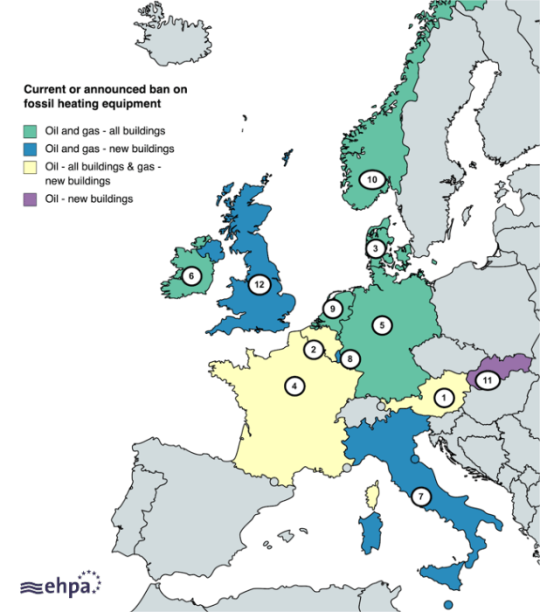
1. AUSTRIA
Ban of oil/coal boilers installation from 2020 in new homes. Plans on banning oil and gas heaters from 2023 in new buildings and on banning oil/coal boilers in existing buildings.
2. BELGIUM
Regional ban in Flanders on the installation of oil boilers in new buildings and renovated ones from 2022. Gas connection ban for large new building projects in Flanders from 2021 and gas connection ban for all new buildings in Flanders from 2025. For Wallonia, no bans have been announced.
3. DENMARK
Use obligation for renewable heating and different zones with exemption regulations. Plans to convert all 400 000 remaining gas boilers, About 50% of buildings will be heated by district heating by 2028 and the rest by heat pumps by 2029.
4. FRANCE
From 1/7/2022 oil boilers banned in all buildings. From 2023 ban on gas boilers in new buildings.
5.GERMANY
Ban on installations of mono-fuel oil/coal boilers from 2026 (new and existing buildings) and regional use of obligations for renewable heating. From 2024, a share of 65% RE in heating in new and existing building-which means a real ban on stand-alone fossil fuel boilers.
6.IRELAND
Oil and gas boilers are to be banned from being installed in both new and existing homes. The ban would apply to newly built homes from 2023 and to installations in existing houses possibly from as early as 2025.
7. ITALY
Share of 60% renewable energies in new buildings from 1/6/2022.
8. LUXEMBOURG
Building requirements that make oil and gas impossible from1.1.2023.
9. NETHERLANDS
Building requirements that make oil and gas impossible from1.1.2023. Ban of connection to the gas grid for new buildings from 2018. From 2026, hybrid heat pumps will be the mandatory minimum standard.
10. NORWAY
Ban on the use of oil and gas for heating in new and existing homes.
11. SLOVAKIA
Plans on banning sales and installation of new fuel and oil boilers by 2023.
12. U.K.
Ban on gas and oil boilers in new buildings from 2025. In Scotland, the new buildings ban will take place in 2024, and existing commitments to legislation prohibiting fossil fuel heating systems in existing buildings at various trigger points from 2025 onwards.
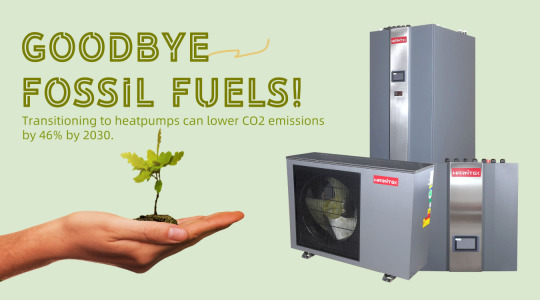
1 note
·
View note
Text
Wait! These Are Heat Pump Fake News?!
Fake News 1: Heat pumps don't work in cold climates.
Truth 1: The most heat pumps can be found in the coldest climates. More than half of all households in Norway have one. For example, the min ambient working temp. in heating mode of Harnitek 6KW air source heat pump YHPK-06V1TBA is around -25°C.
Fake News 2: Heat pumps won't keep you warm.
Truth 2: Households who installed a heat pump report that they are as comfortable or more comfortable than before the installation in survey. 81% have seen the level of comfort improve.
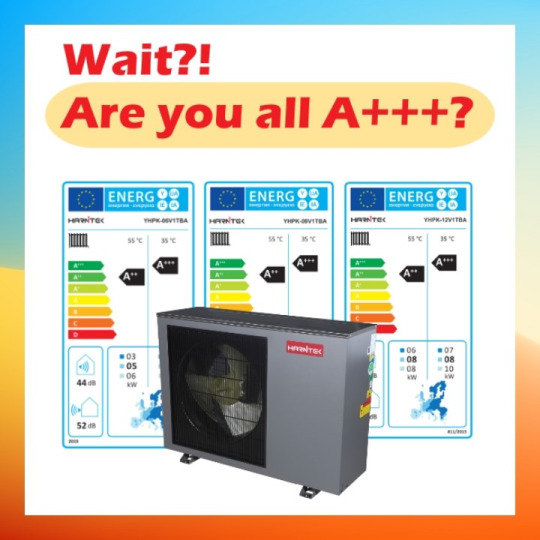
Fake News 3: A heat pump needs to stay on all the time.
Truth 3: You never switch the heat pump off manually but this does not mean the heat pump is operating all the time. The system automatically adjusts to outside and indoor temperatures and ramps down when it is warmer.
Fake News 4: Heat pumps don't work in existing buildings.
Truth 4: From long-standing research:" The research results clearly show that heat pumps as heating sources function reliably also in existing buildings. As a rule, the units worked flawlessly."
Fake News 5: Heat pumps don’t work in old buildings.
Truth 5: Recent results from the UK indicate that there is no significant variation in performance based on house age. Houses do not have to be extensively renovated in order to allow for the installation of a heat pump. For example, we harnitek's heat pump also works well in a 1950s house. Below is a pic from our user ins: @ultra_bungle.
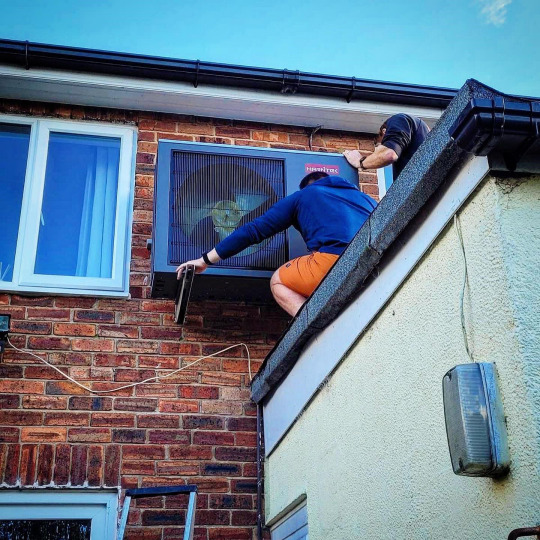
Fake News 6: Heat pumps are unaffordable.
Truth 6: Many countries offer subsidies for heat pumps & with running costs included heat pumps can offer lifetime savings over fossil fuel systems. For example, the UK is providing £100 million in support for businesses and consumers to bring more heat pump manufacturing to the UK. That's why Harnitek passed MCS certification in 2021, now once users buy Hannitek's air source heat pumps, they will receive government subsidies. And we are working on more certifications in different countries, to help users get more affordable heat pumps.
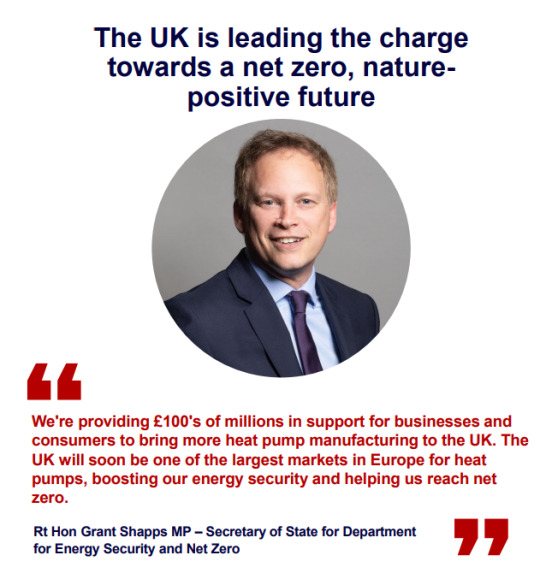
Fake News 7: Heat pumps cost more to run & increase heating bills.
Truth 7: The main energy of the heating water of the air source heat pump system is the air from the surroundings. It only needs to use 1/4 or 1/5 of the electric energy that is equivalent to the electric water heater to get enough hot water. This makes its heating bills obviously lower than the electric water heater or electric boiler.
1 note
·
View note
Text
Impressive! Heat pumps avoided 8m tons of CO2 emissions in Europe 2022
A record number of heat pumps were sold last year in Europe.
Data from Europe shows that 3 million units replaced around 4 billion cubic meters of natural gas in 2022 - the equivalent of avoiding 8 million tons of CO2 emissions. It means that heat pumps are now helping Europe avoid 54 mega tons of CO2 or roughly the equivalent annual emissions of Greece.
The figures come from the European Heat Pump Association (EHPA) which says the extraordinary growth will likely continue.
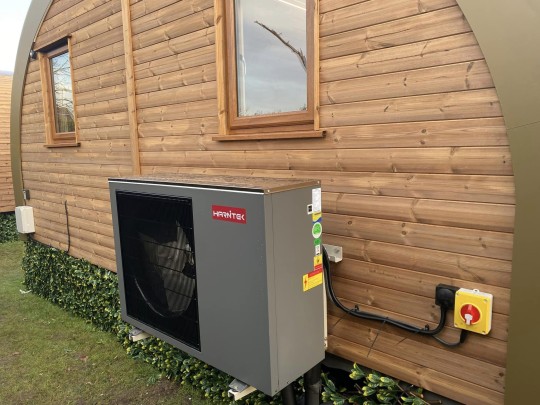
Why Can Heat Pumps Help Avoid CO2 Emissions?
The air source heat pump is a reasonable use of low -grade thermal energy in nature. It is mainly based on the thermal energy in electrical energy and the air, and forces the heat to enter from the outside and increases the space temperature. Because it just moves the existing heat wherever you need it, the efficiency is very high, and its electric heating saves about 70% of energy consumption. At the same time, if you reverse the running of the heat pump, it can cool down the room. Therefore, it consumes a small amount of indirect carbon emissions generated by electric energy, which can effectively reduce carbon emissions and increase displacement.
How to Find A Great Air Source Heat Pump for you?
1. The Key Is Choosing A High-quality Compressor
The core components of an air source heat pump include compressors, water pumps, motors, expansion valves, etc. An efficient compressor can better integrate with other components inside the to maximize the capacity of the air source heat pump. As the core component of the four major components of the air conditioner, the quality of the compressor directly determines the quality of the air source heat pump.
Harnitek chose compressors from the world famous brand Mitsubishi, all are driven by brushless DC motors, eliminating the excitation loss of the rotor coils of traditional AC motors, and the motors have high operating efficiency.
The compressor of the Harnitek heat pump adopts DC frequency conversion technology. The outdoor unit can automatically adjust the output according to the actual load in the room. The compressor runs at a low speed when the room reaches the set temperature, which prevents the frequent start and stop of the compressor and avoids the indoor hot and cold. Comfortable Higher performance, good energy-saving effect, and improve the service life of the compressor at the same time.

2. Pay Attention To The Energy Consumption Of Air Source Heat Pump
The energy efficiency ratio (COP) can measure the performance value of the machine in terms of energy saving, power saving, consumption reduction and environmental protection, that is, the ratio of heating capacity (cooling capacity) to operating power. Generally speaking, the energy efficiency ratio refers to the heating/heating produced by consuming a share of electricity. The higher the energy efficiency ratio, the higher the energy conversion efficiency of the air source heat pump unit, the more power-saving the product, and the relatively less power consumption per unit time. The energy efficiency ratio is an important parameter to measure the performance of the air source. It is necessary to choose a system with a higher energy efficiency ratio and more energy-saving.
Harnitek's 6KW, 9KW, and 12KW air source heat pumps have a maximum COP of 4.82W/W, far exceeding the COP3.0W/W conventional heat pumps on the market.
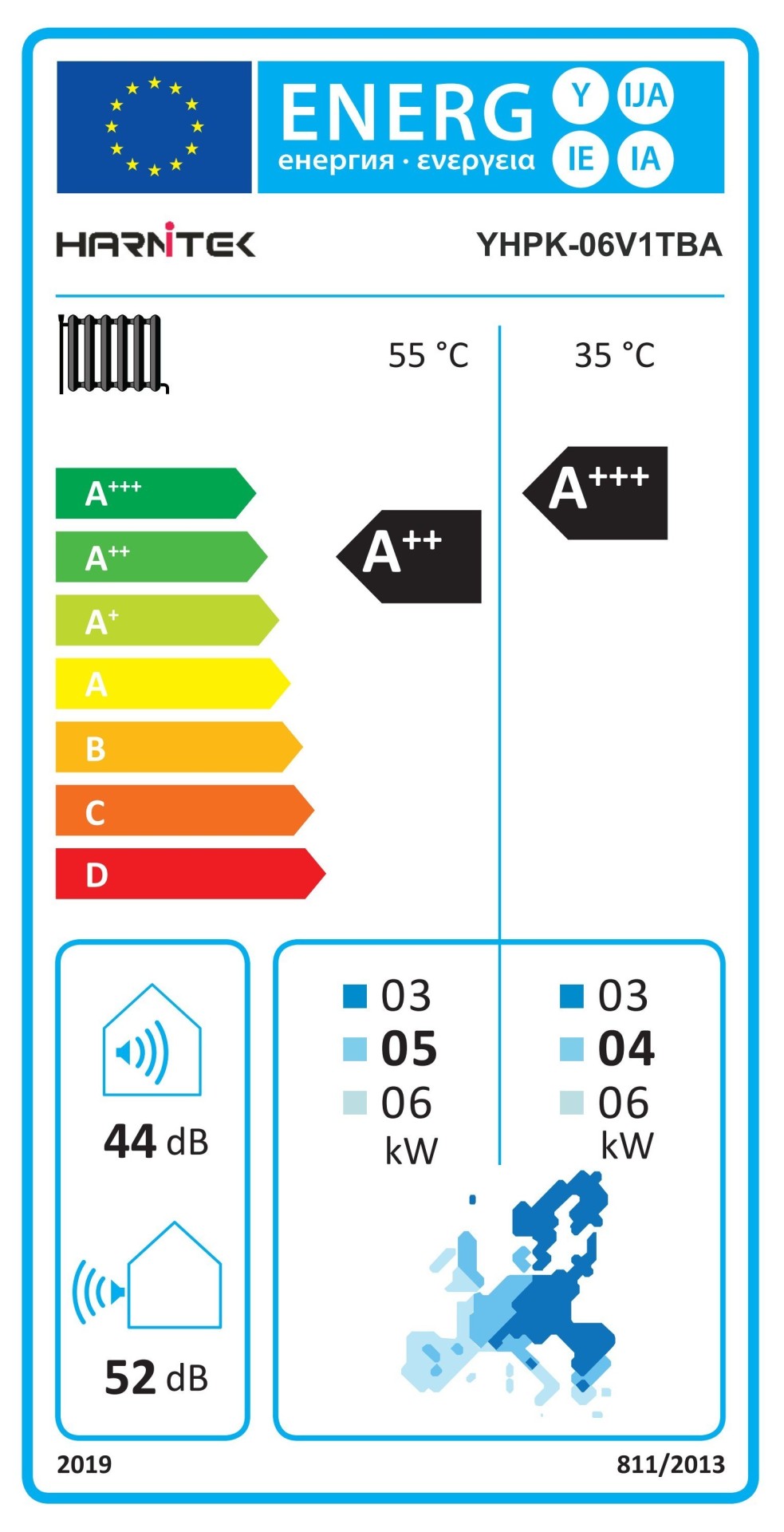
3. Pay Attention To After-sales Service
When purchasing equipment, the operation stability of the unit is very important, and the installation and after-sales service cannot be ignored. After-sales service is an issue that needs to be considered when purchasing an air source heat pump system. All Harnitek air source heat pumps have 5 years warranty, if you have any questions, pls feel free to contact us by email [email protected] or tel 86-731-22332201. We alsao have a professional technical team in the UK, they cn help you to get the training, installation & after-sales service.
1 note
·
View note
Text
Harnitek air source heat pump passed MCS certification!
Harnitek's 6kw, 9kw, 12kw and 45kw air source heat pumps have passed the UK's MCS certification on December 20, 2021, which means that once users buy Hannitek's air source heat pumps, they will receive government subsidies.
Users can select the manufacturer "Hunan Harnitek Technology Co., Ltd." in the product catalog on the MCS official website to inquire about all of Harnitek's MCS-certified products.
Now Harnitek's 6kw, 9kw, 12kw and 45kw air source heat pumps had passed CE, MCS, ERP approvals from world famous organization TUV and INTERTEK etc.
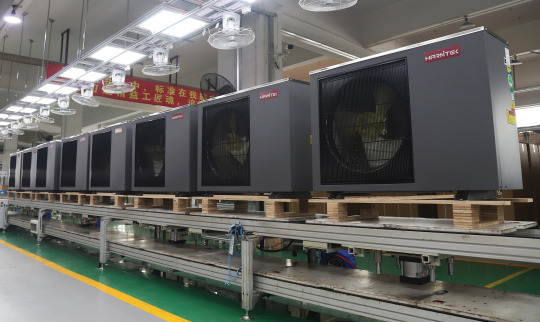
1 note
·
View note
Text
COP(DHW) 4.287, Harnitek Solar Assisted Heat Pump System was awarded the TICK MARK Certificate!
Recently, Hunan Harnitek Technology Co., Ltd. (hereinafter referred to as "Harnitek") was awarded the Tick-Mark certificate for high energy efficiency of their solar assisted heat pump water heater issued by Intertek. It is the first enterprise in the water heater industry to obtain this certification.
This shows that the structure of the Harnitek solar-assisted heat pump system (hereinafter referred to as "Thermopod unit") meets the requirements of the IEC 60335-2-40 standard, which not only meets the basic functions of the water heater, but also has excellent performance in terms of product safety and energy efficiency.
Intertek tests the thermal efficiency of solar collectors according to the ISO 9806:2017 standard, obtains the coefficient for calculating the heat output of the collector, and calculates the solar collector panel with reference to the test conditions and requirements in Table 3 and Table 4 of (EU) No 814/2013. The heat output of the device and the energy efficiency test according to the performance test section of EN 16147:2017, the following three important data are finally obtained:
1. The energy consumption of the Thermopod unit under sunlight is 46% less than that without sunlight;
2. When there is sunlight, its water heating energy efficiency is 186%;
3. The COP (DHW) value is 4.287 when the test environment temperature is 7℃ and there is sunlight.
Different from conventional heat pump water heaters, the Thermopod unit is designed for multiple heat sources, it can absorb heat energy through two external heat collecting panels and automatically provide you with hot water, all natural elements such as air, wind, rain, sunlight and even snow can be provide a heat source for it. Even when there is no sun or night or in bad weather conditions, it can absorb thermal energy and operate normally, which can greatly meet the actual needs of the European market.
At the same time, the Thermopod unit does not need a motor fan, and the noise level during operation is ≤41dB, which is like a whisper, which solves the noise problem that has always existed in traditional heat pump products.
Considering the convenience of installation and use, Thermopod units can be quickly compatible with existing hot water systems. No matter what system the user is currently using (natural gas, oil, electricity or liquefied petroleum gas system, etc.), just turn off the original system and add it to the hot water system, and it can be used directly.
As of today, the Thermopod unit has obtained CE, ERP, MCS and TICK MARK certificates, and is rated A in the ERP report, which is currently the highest rating among similar products.
With a strong engineering and design team, Harnitek has gathered leading heat pump technical talents engaged in the research and development of thermodynamic systems, continue to provide the best solution for the user's heat pump application.

1 note
·
View note
Text
Hi there, we Harnitek are coming to Tumblr!

Really nice to meet you, let's hang out together!
4 notes
·
View notes